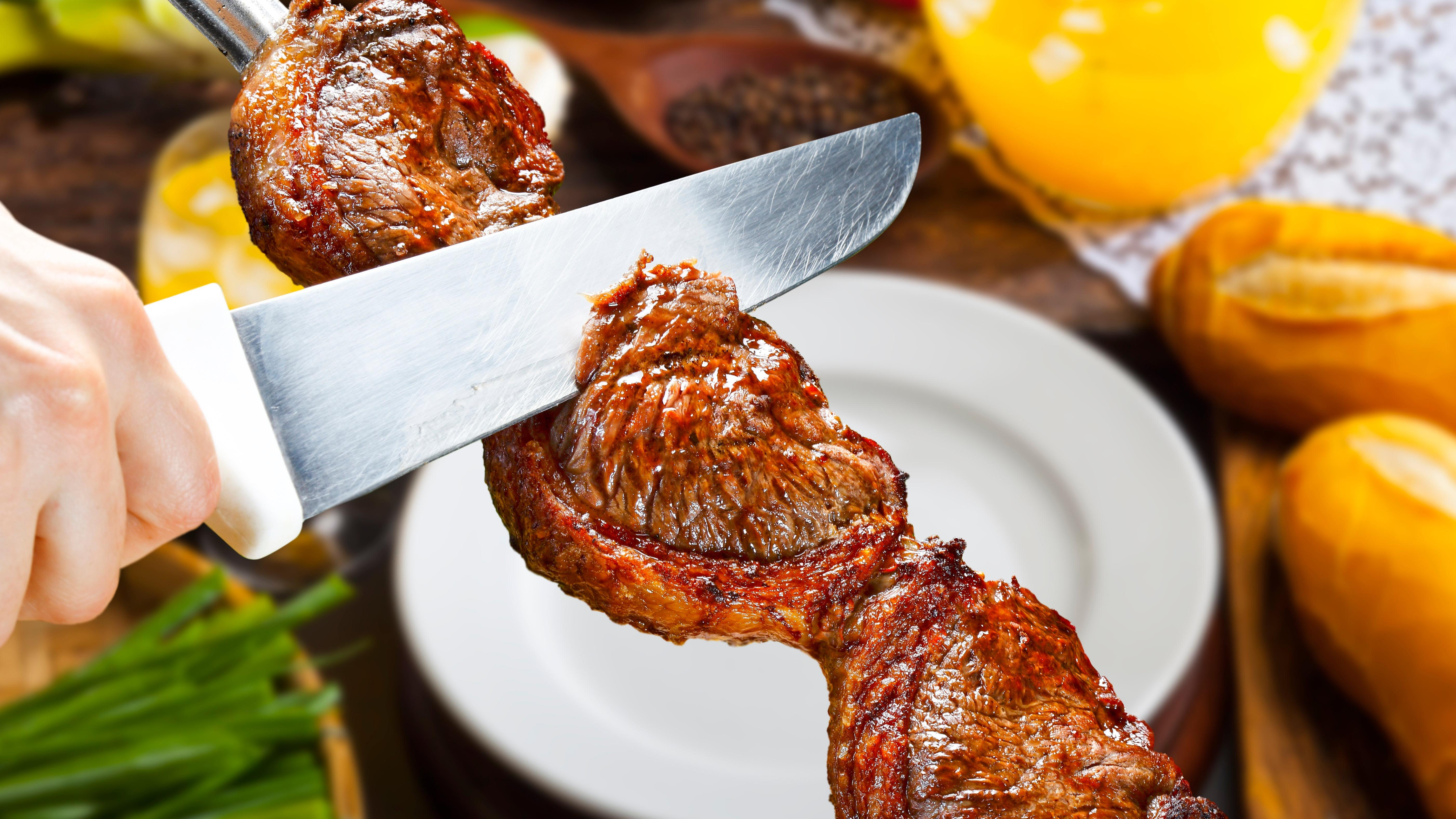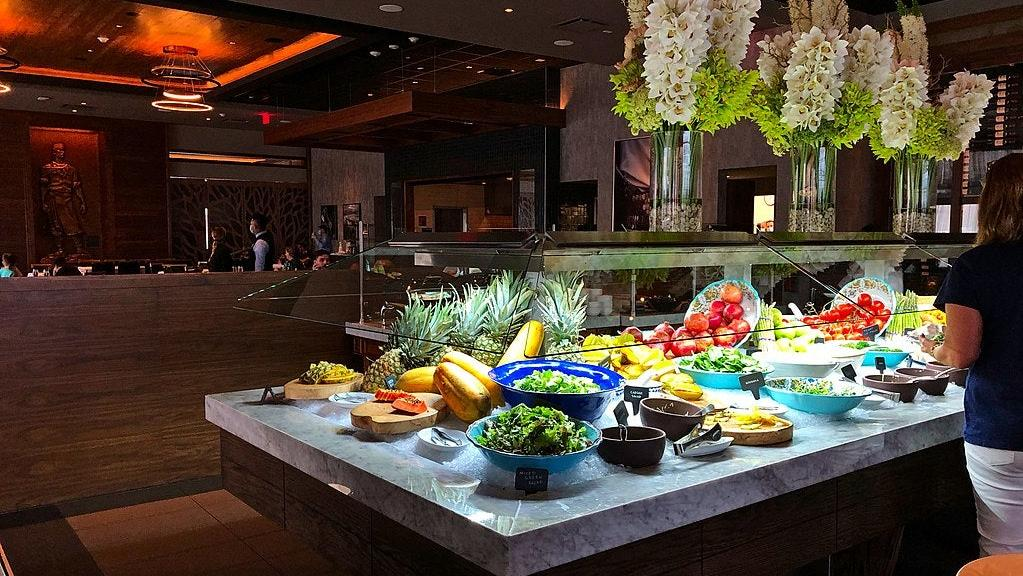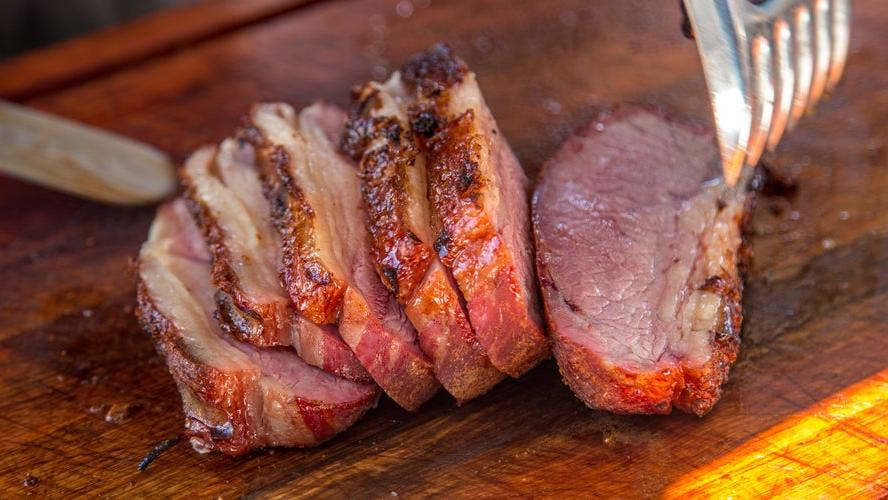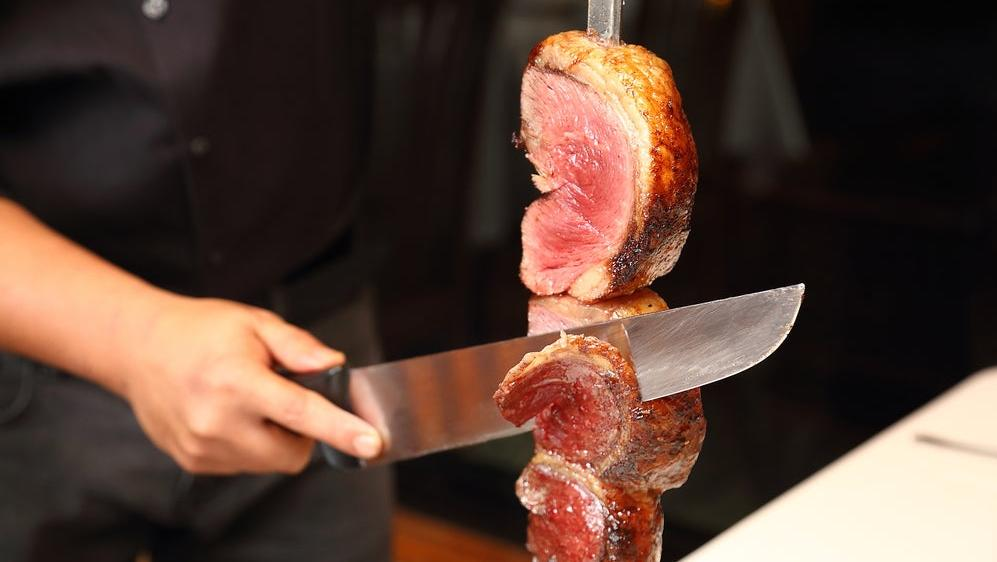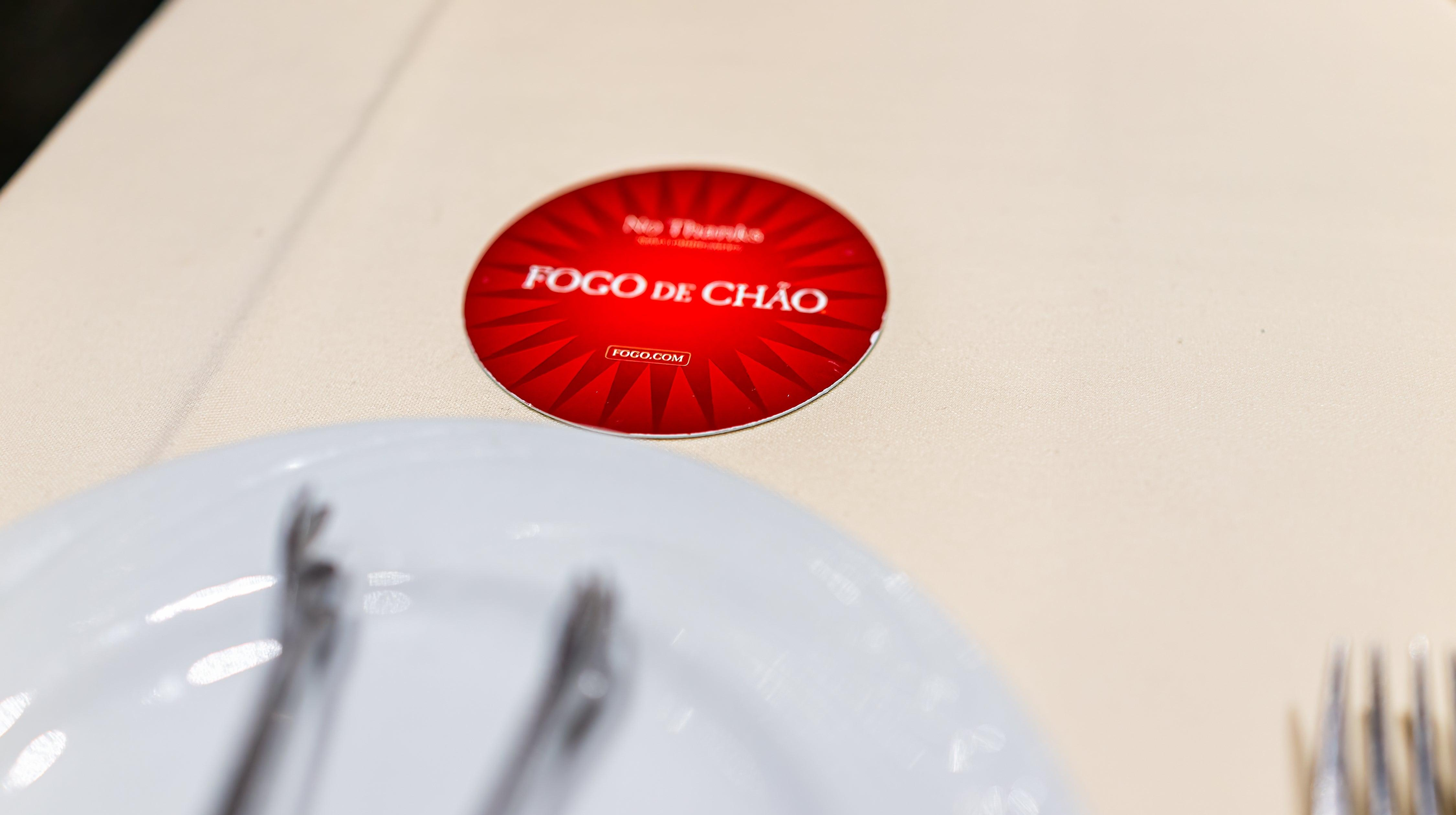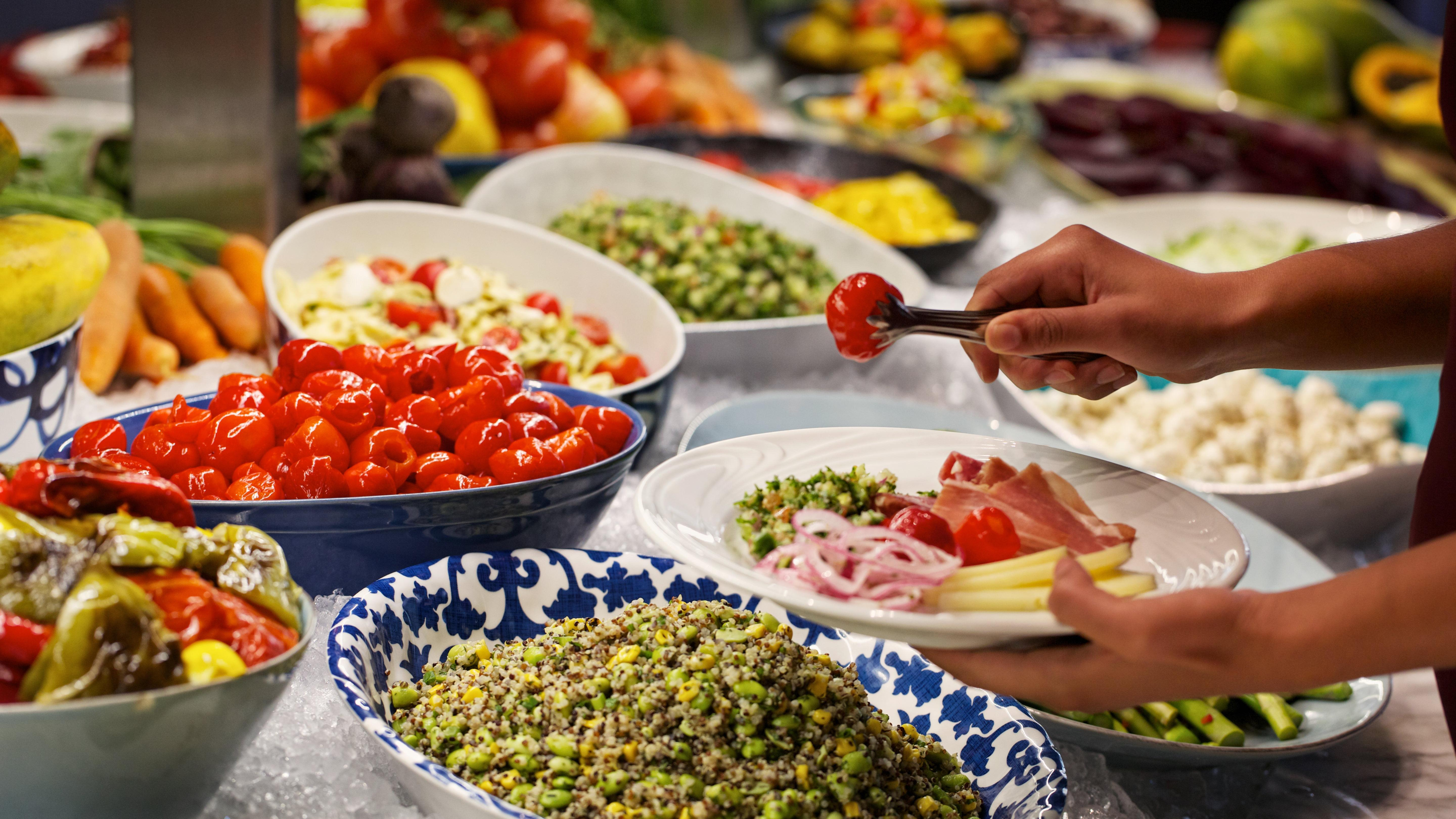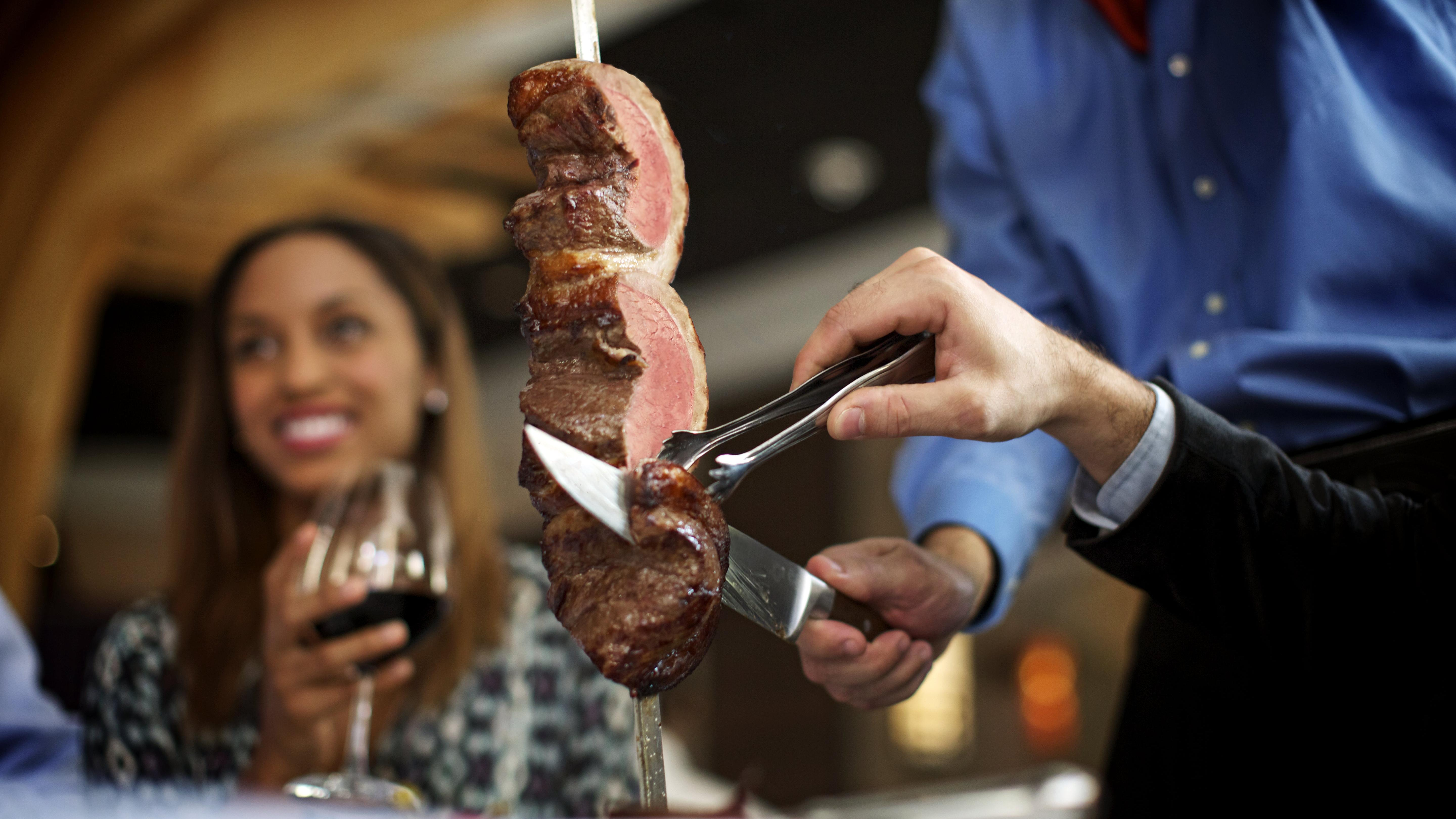The Beginner's Guide To Brazilian Barbecue
Everything a first-timer should know about churrascaria dining.
If you've never been to a Brazilian barbecue restaurant, often referred to as a Brazilian steakhouse or churrascaria, you're missing out—it's a memorable experience regardless of whether you're a carnivore. In most cases you'll gain access to a generous salad bar, and after that, you'll be offered all the cuts of spit-roasted meat you can eat, presented by a fleet of servers who will become your best friends over the course of the meal.
Aside from the salad bar, don't expect a buffet. The meat is brought to where you sit and is carved tableside, a style of service known as rodizio. You might also be served some occasional sides such as pão de queijo, a texturally delightful roll (very bouncy and chewy) made from cassava flour and cheese.
Pork, chicken, lamb, various sausages, maybe some seafood, multiple cuts of beef—it's all on offer, and since it's all-you-can-eat, it's up to you to decide when you've had enough. Dining at an American churrascaria can be daunting for first-timers, so we've got some tips for making the most of your experience.
Go easy on the salad bar
The salad bar at a churrascaria is usually a lavish affair overflowing with choices. You'll find the standard range of vegetables, but sometimes you'll see cured meats, smoked salmon, grain salads, and more, all of which will call you like a siren to the sea. But much like the endless Cheddar Bay Biscuits at Red Lobster, the salad bar can be a bit of a trap.
Go easy on the heavy, fiber-dense salad bar items to leave room for all the good stuff that awaits you. You're at a churrascaria because you want to eat as much meat as possible, after all. If anything, you might want to use the salad bar to assist you in your meat consumption: Bring a lightly dressed salad or some simple greens back to your table to serve as a palate cleanser between proteins.
However—and this is a huge however—most Brazilian barbecue restaurants offer the option to only eat from the salad bar, which is a great option if you're not into big cuts of meat for any reason, dietary or otherwise. The salad bar option costs less money, typically offers a bit of meat in the form of cold cuts, and includes a range of satisfying options. If you go this route, you won't have to pass on the tempting feijoada (Brazil's national dish, a black bean stew) just to save room for steak.
Know what types of meat to expect
It'll be quite a selection. Think sausages, chicken, chicken hearts, various bacon-wrapped medallions of beef or pork, leg of lamb, filet mignon, pork ribs, beef ribs, and more. Don't forget to ask your server about any house specialties, and check whether there are any new offerings available that day, because you don't want to miss out on the most interesting stuff.
If anything catches your eye as it's walked around the dining room, don't be afraid to ask for a serving of it.
Don’t skip this one cut of meat at any Brazilian steakhouse
If there's one menu item to savor at Brazilian barbecue, it's picanha. For some reason this particular cut of beef, also known as the top sirloin cap, rump cap, or culotte (in French), isn't widely eaten in the United States. The steak has a signature appearance to it: look for a half-moon shaped cut of meat with a fat cap on the rounded exterior portion.
The meat will be tender and juicy, with a strong beefy flavor to it. Picanha is a prized cut in Brazil, so any Brazilian restaurant has to do this one justice. Make sure there's some room on your plate for it.
Know when to signal for more (or less) meat
It varies from one churrascaria to another, but typically restaurants implement a method for diners to indicate to the servers when they're ready to chow down or take a pause. At chains such as Fogo de Chão and Texas de Brazil, you'll be given a little coaster that is red on one side and green on the other. Consider this table marker your stoplight for the flow of food to your plate.
If you flip the coaster so that the green side is visible, then the nearest waiter will approach you with whichever cut of meat that they're offering. If you want what's on their skewer, use the tongs provided you to grab the meat as it's being sliced or pulled off (don't use your hands!). Be warned: servers will keep coming to you if the green side of your marker is visible, so flip it to red if you want to focus on the food you already have. Otherwise the meat will pile up quickly.
Pace yourself throughout the meal
You will get the meat sweats. It's virtually unavoidable. You're going to an all-you-can-eat barbecue restaurant and this is all par for the course—it's just a matter of how badly they'll hit you. Go in with the right mindset: you're there to eat your personal fill, not "beat" the restaurant by wringing maximum value from its service model. (The restaurant wins that game every time.)
There's no reason to leave a Brazilian steakhouse feeling absolutely terrible. Savor what you're eating and don't hoard meat, because you have more time than you think you do to take it all in. This is session dining, and we promise you won't get kicked out before you've had a chance to sample everything you want.
Know what you’re paying for
While an all-you-can-eat meal at a Brazilian barbecue restaurant has the benefit of a flat fee that you'll know in advance, understand that there are some add-on items that can drive the bill higher. At my nearest Fogo de Chão location in Chicago, for example, dinner starts at a basic price of $62.50, but that doesn't include drinks or dessert, which can be purchased at an extra cost. However, the $62.50 does include the Market Table (salad bar), as well as the feijoada bar. Even if you choose to skip out on drinks or dessert, though, don't skip out on the tip.
